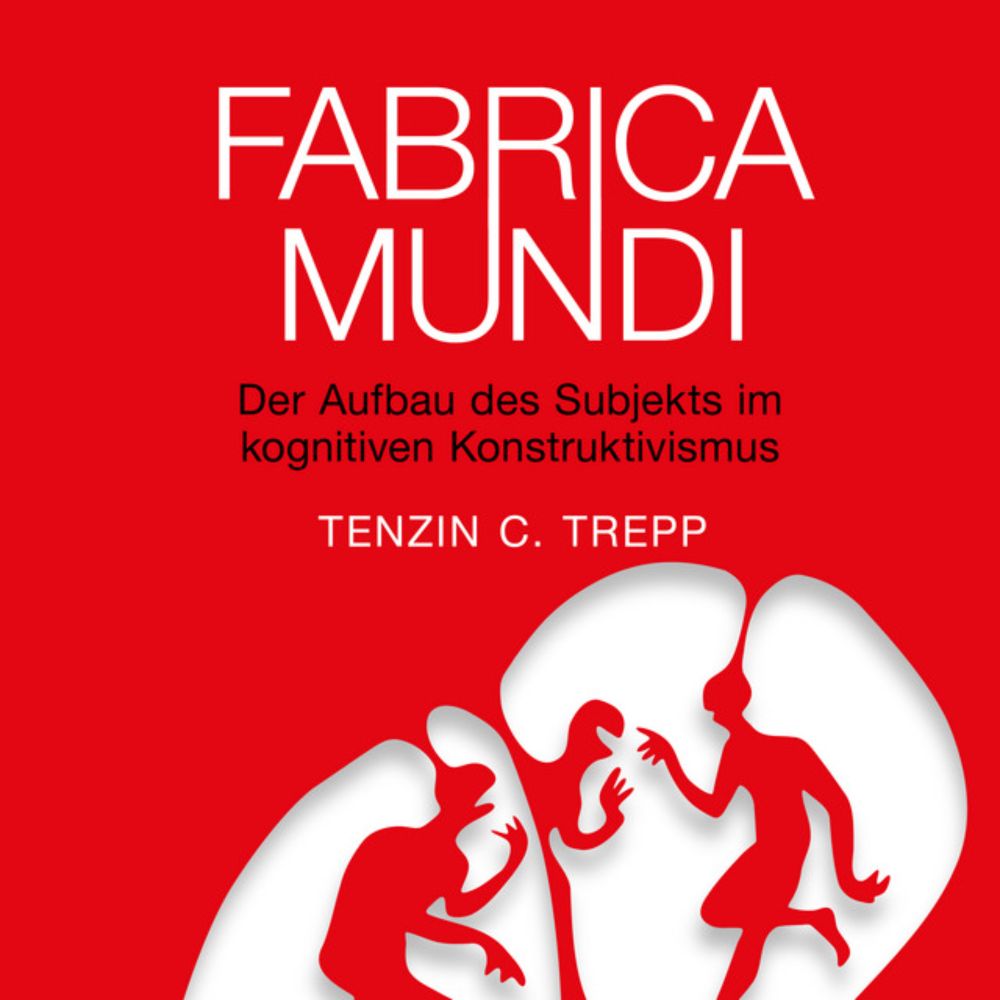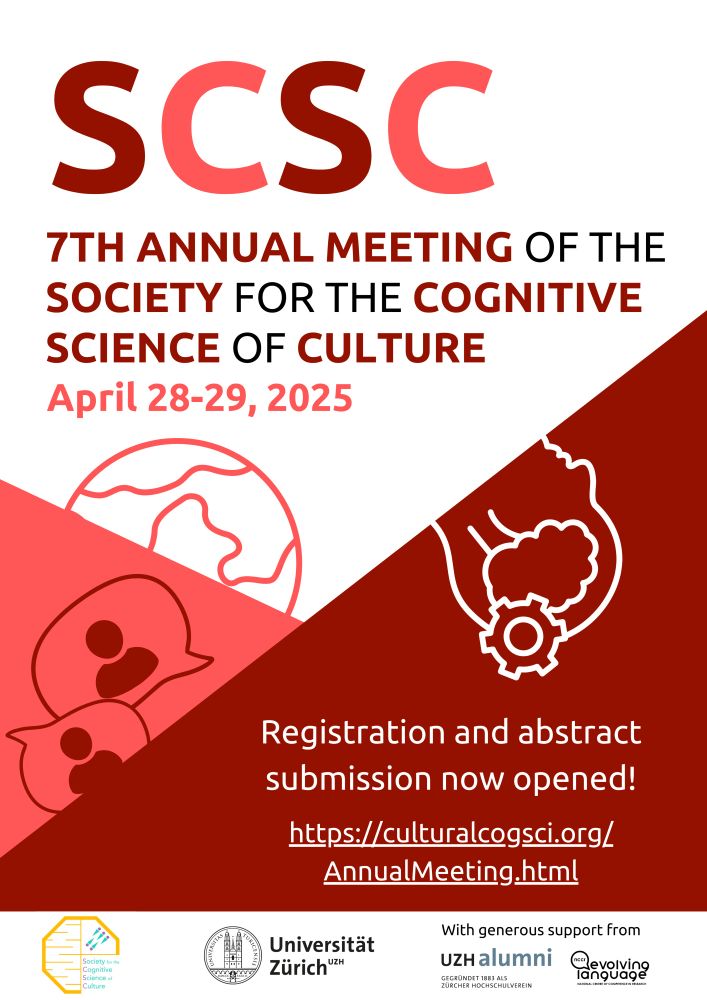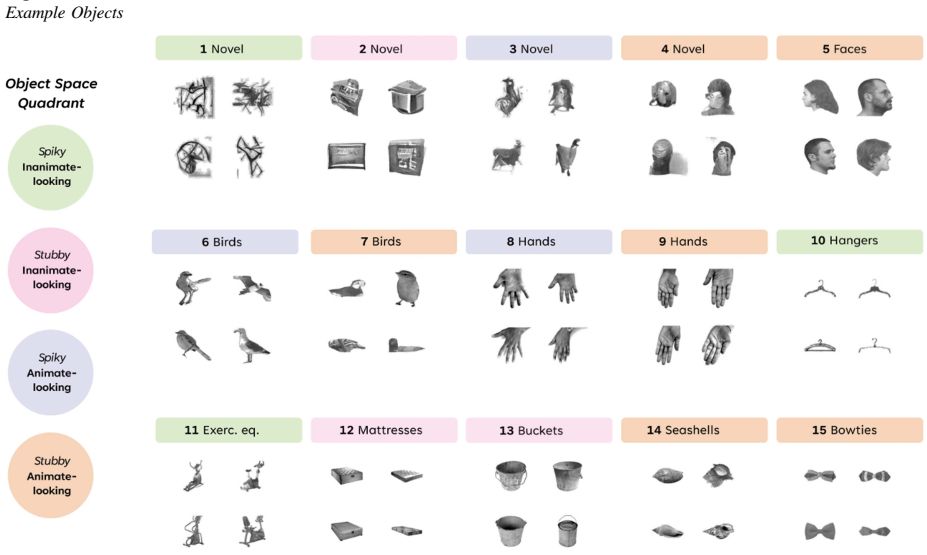
Existential Realism: A Distinct Ontological Framework Beyond Presentism
This paper introduces Existential Realism as a novel ontological framework in metaphysics that offers a rigorously technical alternative to presentism. In contrast to standard presentism's claim t...
Tenzin Trepp just released a new paper on a radical theory of time: "Existential Realism: A Distinct Ontological Framework Beyond Presentism". This framework goes beyond presentism and offers a fresh ontological lens.
📄 t.ly/YMPnT
#Philosophy
#Metaphysics
#Time
#Ontology
23.07.2025 18:51 — 👍 2 🔁 0 💬 0 📌 0

Author Spotlight: Tenzin Trepp
Philosopher, visual cognitiologist & Stoic thinker. Exploring perception, meaning & the mind in bold new ways.
🧠📘 Discover more:
thinker-tank.net/en/news/auth...
04.07.2025 10:00 — 👍 0 🔁 0 💬 0 📌 0

FABRICA MUNDI: Der Aufbau des Subjekts im kognitiven Konstruktivismus
Tenzin C. Trepp · Audiobook
📣 Jetzt auch als Hörbuch!
Mein Buch über kognitiven Konstruktivismus ist ab sofort ungekürzt auf Spotify (t.ly/xx0J8), Google Play (t.ly/-EOgl), Apple Books & vielen weiteren Plattformen verfügbar. Reinhören lohnt sich – verständlich, fundiert und jetzt auch zum Hören. 🎧📚
18.06.2025 14:35 — 👍 0 🔁 0 💬 0 📌 0
Excited to share our new work by @annaborghi.bsky.social @claudiamazzuca.bsky.social and @ideeverdi.bsky.social! We dive into abstract concepts in social interaction—exploring vagueness, knowledge outsourcing, cross-cultural variation, and the role of LLMs.
rdcu.be/elbbT
08.05.2025 14:59 — 👍 4 🔁 2 💬 0 📌 0

🧠 We just launched Thinker Tank — a new platform for exploring cognition, mental states, and psychology. Dive into interdisciplinary reflections and join the dialogue. 🚀 thinker-tank.net #ThinkerTank #Cognition #Interdisciplinary
09.05.2025 10:15 — 👍 0 🔁 0 💬 0 📌 0

Biggest brain map ever details huge number of neurons and their activity
3D reconstruction is the first to overlay neuronal activity on a large-scale map of brain cells.
A detailed map of mouse brain cell structure and connections, offering insights into how they relate to activity in the mouse brain, is revealed in a package of papers published Nature and @naturemethods.bsky.social.
#Neuroscience #Neuroskyence
10.04.2025 20:39 — 👍 14 🔁 4 💬 0 📌 0
APA PsycNet
#MorningReads
A national probability sample from the Adolescent Brain Cognitive Development study. Children w/ intersecting marginalized identities face higher depression, self-injury, and suicidal ideation. #LGBTHealth
13.02.2025 16:05 — 👍 3 🔁 3 💬 0 📌 0

Discover Montessori puzzles for toddlers to boost cognitive development & fine motor skills with interactive, educational wooden shape-sorting fun.
The post “Engage & Learn: Montessori Wooden Shape Sorting Puzzle – The ... https://s.mtrbio.com/sxsnrlxaif
14.02.2025 04:01 — 👍 1 🔁 1 💬 0 📌 0
The problem is that cognitive science wants it both ways when it comes to the "hard core" of computation over representation.
Strong empirical programs have been scoffed at and quickly dismissed because they didn't explain in these terms (see below)
onlinelibrary.wiley.com/doi/full/10....
13.02.2025 16:22 — 👍 3 🔁 1 💬 1 📌 0

7th annual meeting of the Society for the Cognitive Science of Culture (SCSC). Registration and abstract submission now opened!
📢 Join the 7th annual meeting of the Society for the Cognitive Science of Culture ( #SCSC ) on the 28-29th of April at the University of #Zurich! Registration and abstract submission are now open until the 28th of February.
More information:
culturalcogsci.org/AnnualMeetin...
13.02.2025 18:28 — 👍 6 🔁 4 💬 0 📌 0

Really enjoying this book. So many great examples for teaching Sensation and Perception!
12.02.2025 00:54 — 👍 23 🔁 3 💬 3 📌 0

Multidimensional scaling was performed on the correlation matrix for performance (targets per second) on individual trials. This was done separately for (a) trials with novel objects and object-matched faces and (b) trials with familiar objects and object-matched faces. Each dot depicts a single trial, and the distance between two points is approximately equal to their dissimilarity. Trials are clustered based on our preregistered analysis pipeline: The faces cluster corresponds to trials contributing to the face discrimination dependent variable in Table 2, the stubby-animate objects cluster corresponds to trials contributing to factors added at Step 4 in Table 2, and the other objects cluster corresponds to trials contributing to factors added at Step 3 in Table 2. Dots are connected to their cluster’s barycenter via lines. Confidence ellipses for barycenters of the three clusters are shown, both for the 95% confidence level (light ellipses) and the 50%
confidence level (dark ellipses).
Specific abilities for faces were additionally partially accounted for by their visual qualities as measured by location in object space. Face abilities were better predicted by people's abilities for discriminating stubby animate-looking objects than their abilities for other objects. 12/13
13.02.2025 11:27 — 👍 3 🔁 1 💬 1 📌 0

Example stimuli of 15 object types are shown. Quadrants of object space are represented by different colors (orange: stubby animate-looking; purple: spiky animate-looking; pink: stubby inanimate-looking; green: spiky inanimate-looking; gray: all objects). Exerc. eq. = exercise equipment.
Paper🚨 "Objects, Faces, and Spaces: Organizational Principles of Visual Object Perception as Evidenced by Individual Differences in Behavior" by @heidasigurdar.bsky.social & @ingamariao.bsky.social JEP:G editor's choice ->free to read psycnet.apa.org/fulltext/202... #visionscience #psychscisky 🧵1/13
13.02.2025 11:27 — 👍 57 🔁 21 💬 1 📌 1

Abstract: Vision science largely ignores the fact that rural visual environments typical of our species’ history differ radically from urban zones from which almost all samples are drawn: Only a handful of paradigms have been used to investigate rural-urban differences in visual perception, and some show limited effects or suffer from limited methodologies. Here we more than double the total number of paradigms in this literature, including visual illusions assumed to rely on universal mechanisms (e.g. Gestalt shapes, Cafe wall, curvature blindness). Results reveal profound differences in visual phenomenology, with rural Namibian participants often failing to see percepts obvious to UK/US participants and vice versa. In sum, what is universal and what is culturally-constructed in human visual perception remains a wide-open area of research.
Does cultural experience shape visual perception?
New research finds "profound differences in visual phenomenology, with rural Namibian participants often failing to see percepts obvious to UK/US participants and vice versa."
Preprint: doi.org/10.31234/osf...
13.02.2025 18:48 — 👍 67 🔁 16 💬 4 📌 7

Designing a Course That Develops Students’ Metacognition
By shifting their focus to the process of learning instead of the product, students are encouraged to develop critical cognitive competencies.
What happened when this school structured a course around cognitive competencies instead of traditional academic products like projects or essays?
Spoiler: *So much learning.* 🤯
#assessment #metacognition #EduSky
13.02.2025 12:34 — 👍 14 🔁 6 💬 0 📌 0
In the field of neuroethology, "insect swarm intelligence" remains a pu. While insects like bees and ants exhibit highly coordinated group behavior, the fundamental principles and neural mechanisms underlying these complex swarm dynamics are not fully understood.
11.02.2025 11:30 — 👍 1 🔁 1 💬 0 📌 0

Boosting attention and learning with Blake Harvard (Ep 38)
Chalk & Talk · Episode
Blake Harvard on his book "Do I Have Your Attention?" and how he uses cognitive psychology in teaching. He covers memory, attention, learning pitfalls, and practical strategies like retrieval and spaced practice. Harvard argues that strong knowledge foundations boost creativity.
13.02.2025 15:26 — 👍 2 🔁 1 💬 0 📌 0
This took us years to do, from idea to publication, so glad to see this out 😊 Would love it if you would read and share. And huge thanks to all who helped us, including all our participants. #visionscience #neuroskyence #psychscisky #cogsci #cognitivescience #cognitivepsychology
13.02.2025 11:33 — 👍 48 🔁 14 💬 1 📌 2

Cognitive psychologists - here's a Swift-oriented pop quiz re: visual search (pop-out), word frequency & word superiority effects I made last year (still relevant this year!) I'm happy with it (though it's fairly simplistic). Would you change any of the answers or tweak any of the questions? Q1 -->
12.02.2025 14:04 — 👍 1 🔁 1 💬 1 📌 0
YouTube video by Quanta Magazine
Why Some People Don’t ‘See’ Mental Imagery: Aphantasia
Why Some People Don’t ‘See’ Mental Imagery: Aphantasia #neuroscience #cogpsyc #aphantasia #memory
13.02.2025 02:15 — 👍 7 🔁 2 💬 1 📌 0
Well, cog sci in systems neuroscience is becoming more and more alive, day after day
12.02.2025 19:20 — 👍 7 🔁 2 💬 1 📌 0
I think, regardless how you see what cognitive science is, the bibliometric and dept. evidence presented is pretty clear. anthropology, linguistics, philosophy, neuroscience, and psychology simple did not cohere into a unified front. its interesting to think about why...
13.02.2025 06:32 — 👍 5 🔁 1 💬 1 📌 0

Simulation Theory: A psychological and philosophical consideration (Explorations in Cognitive Psychology)
Unlock the mysteries of #SimulationTheory with the latest insights into cognitive psychology! Dive deep into the fascinating world of perception and reality. 🌐
13.02.2025 13:24 — 👍 3 🔁 1 💬 0 📌 0

A graphic from 1991 showing many of the leading thinkers in cognitive science, organized in concentric circles (cognitivism, emergence, and enactive) and across disciplines (for example, AI, philosophy, neuroscience). Many if not all them are white men?
This taxonomy of cognitive science its and leading contributors is from 1991. I recognize about half the names -- all white men. Relatedly perhaps, on this account "anthropology" is no longer seen as one of cog sci's subdisciplines. Graphic here: github.com/rdgao/WH2Cog... (republished)
13.02.2025 12:52 — 👍 13 🔁 2 💬 1 📌 0
Causation is complex and multi-faceted, and our language provides us with a limited set of expressions to communicate what happened. By drawing on insights from philosophy, linguistics, and psychology, our work brings us one step closer to understanding how people communicate about causality.
🔚 👍
12.02.2025 18:25 — 👍 2 🔁 1 💬 0 📌 0

New paper in Psychological Review!
In "Causation, Meaning, and Communication" Ari Beller (cicl.stanford.edu/member/ari_b...) develops a computational model of how people use & understand expressions like "caused", "enabled", and "affected".
📃 osf.io/preprints/ps...
📎 github.com/cicl-stanfor...
🧵
12.02.2025 18:25 — 👍 57 🔁 17 💬 1 📌 0
Create and share social media content anywhere, consistently.
Built with 💙 by a global, remote team.
⬇️ Learn more about Buffer & Bluesky
https://buffer.com/bluesky
📚Book lover & whatnot📚
BarnesandNoble.com
Professor, LSE. Philosophy of science, animal consciousness, animal ethics. Director of The Jeremy Coller Centre for Animal Sentience.
We foster developmental science throughout Europe | Information of and for EADP members
Icelandic Vision Lab focuses on all things visual with a major emphasis on higher-level or "cognitive" aspects of vision: visionlab.is This is a joint account run by IVL PIs (Ásgeirsson, Hansmann-Roth, Kristjánsson, Ólafsdóttir, Sigurdardottir).
Fostering exchange between political psychology scholars from various disciplines and countries
Posts by @srhbuhl.bsky.social @vinzenzhuebl.bsky.social @lenamasch.bsky.social
https://polpsynet.netlify.app/
Globally renowned institute for research excellence and education in #Psychiatry, #Psychology, & #Neuroscience based at @kingscollegelondon.bsky.social
www.kcl.ac.uk/ioppn
We represent the interests of student members of the Society for Personality and Social Psychology. Email us at spsp_GSC@spsp.org!
#AmplifyGradStudentVoices
Sharing updates about trust and safety on Bluesky.
This account’s mentions are not actively monitored. To report a post or account, use the in-app reporting feature.
Community Guidelines: https://bsky.social/about/support/community-guidelines
Join #AcademicChatter for support & community in higher education.
Assistant Professor of Psychology at UMass Amherst.
Director of the Culture and Morality Lab.
Assistant Professor of Psychology at University of Toronto. I catch thoughts and feelings for a living. He/him 🌈 yilinandrewang.com
Your Voice for Social Science in Washington.
A nonprofit dedicated to advancing scientific psychology across disciplinary and geographic borders.
psychologicalscience.org
Jobs: jobs.psychologicalscience.org
Membership: psychologicalscience.org/members
#APSGlobal: APS Global Summit
SPSP strives to advance the study, teaching, and application of social and personality psychology. Links, Reposts ≠ endorsement. Monitored 9am ET - 5pm ET, Monday-Friday
An online-only journal publishing Reviews, Perspectives & Comments across psychology, its applications & societal implications. Tweets from the editors. https://www.nature.com/nrpsychol/
Associate editor at Nature Human Behaviour (@naturehumbehav.bsky.social)
A @natureportfolio.nature.com journal on mathematical models and computational methods/tools that help advance science in multiple disciplines. https://www.nature.com/natcomputsci
A scientific journal publishing cutting-edge methods, tools, analyses, resources, reviews, news and commentary, supporting life sciences research. Posts by the editors.




















